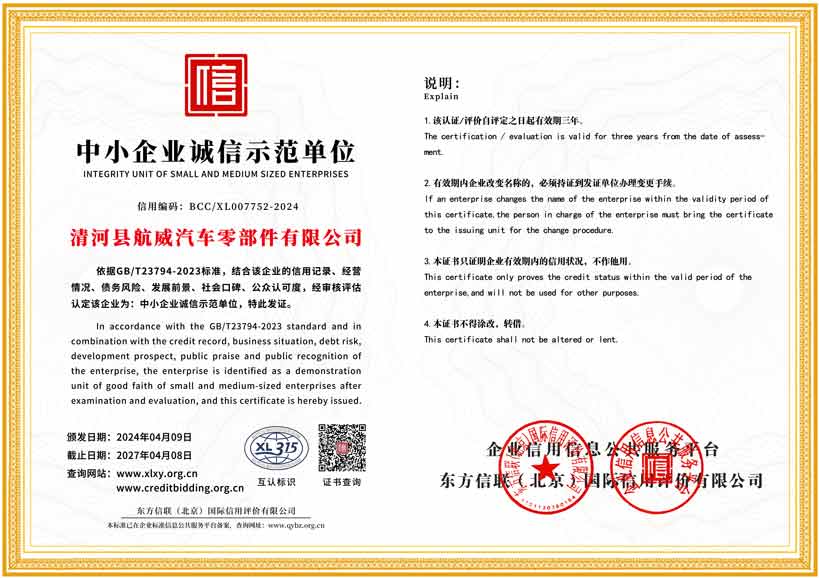Understanding the Function and Adjustment of the Carburetor Cable in Your Vehicle's Engine System
Understanding Carburetor Cables A Key Component for Smooth Engine Performance
The carburetor cable is an essential component in the operation of many internal combustion engines, particularly those found in older vehicles, motorcycles, and various small engines. It serves as a critical link between the throttle pedal or lever and the carburetor, facilitating the control of air and fuel mixture that the engine requires to operate efficiently. In this article, we'll delve into the function, importance, and common issues related to carburetor cables.
At its core, the carburetor cable is a flexible metal wire housed within a casing. One end of the cable is connected to the throttle control—be it a pedal in a car or a handgrip in a motorcycle—while the other end connects to the throttle valve of the carburetor. When the driver or rider presses down on the accelerator or twists the throttle, the cable is pulled, which in turn opens the throttle valve in the carburetor. This action allows more air and fuel into the engine, increasing power output and enabling acceleration.
The importance of the carburetor cable cannot be overstated. A properly functioning cable ensures that the engine responds as expected when the throttle is engaged. If the cable is too slack, it may not fully open the throttle, resulting in sluggish acceleration. Conversely, if the cable is too tight, it can cause the throttle to stick open, leading to unsafe driving conditions. Therefore, regular inspection and maintenance of the carburetor cable are vital for optimal engine performance.
carburetor cable

However, like any mechanical component, carburetor cables can experience wear and tear over time. Common issues include fraying of the cable, corrosion of the metal wire, or damage to the casing. Fraying can lead to a sudden loss of throttle control, which can be dangerous if it happens while driving. Corrosion can impede the smooth movement of the cable within its casing, leading to stiffness or a lag in response when the throttle is engaged. It’s crucial to replace a worn or damaged cable promptly to prevent further complications.
When it comes to maintenance, ensuring the carburetor cable is properly lubricated can extend its lifespan and maintain smooth operation. A simple inspection can reveal any signs of wear; mechanics often recommend checking the cable during regular service intervals. Additionally, if a vehicle exhibits symptoms of throttle issues, such as unresponsive acceleration or inconsistent engine behavior, the condition of the carburetor cable should be one of the first things to be evaluated.
Replacing a carburetor cable is a task that can often be accomplished by hobbyists with basic mechanical skills, but it requires patience and attention to detail. Typically, this involves detaching the old cable from both the throttle control and the carburetor, routing the new cable in the same path, and ensuring it is adjusted correctly. Proper tension allows smooth operation without lag or binding.
In conclusion, the carburetor cable is a vital component that contributes significantly to the engine performance in many vehicles and machines. Regular maintenance, inspection, and prompt replacement of damaged cables can help ensure that vehicles run smoothly and efficiently. Understanding the function and significance of the carburetor cable empowers vehicle owners to take better care of their engines, leading to a safer and more enjoyable driving experience. Whether you are a seasoned mechanic or a casual driver, familiarizing yourself with this crucial component could save you from potential throttle-related headaches down the road.
-
Clutch Line: Braided, Leak-Proof, OEM-Grade PerformanceNewsNov.10,2025
-
Throttle Cable: Durable, Smooth Control & Universal FitNewsNov.10,2025
-
Throttle Cable: Durable, Smooth, Universal Fit, Easy InstallNewsNov.10,2025
-
Clutch Line: Durable, Leak-Proof, OEM-Grade PerformanceNewsNov.10,2025
-
Hand Brake Cable | Custom, Universal & Trailer SolutionsNewsNov.10,2025
-
Clutch Line: High-Pressure, OEM-Fit, Corrosion-ResistantNewsNov.03,2025
